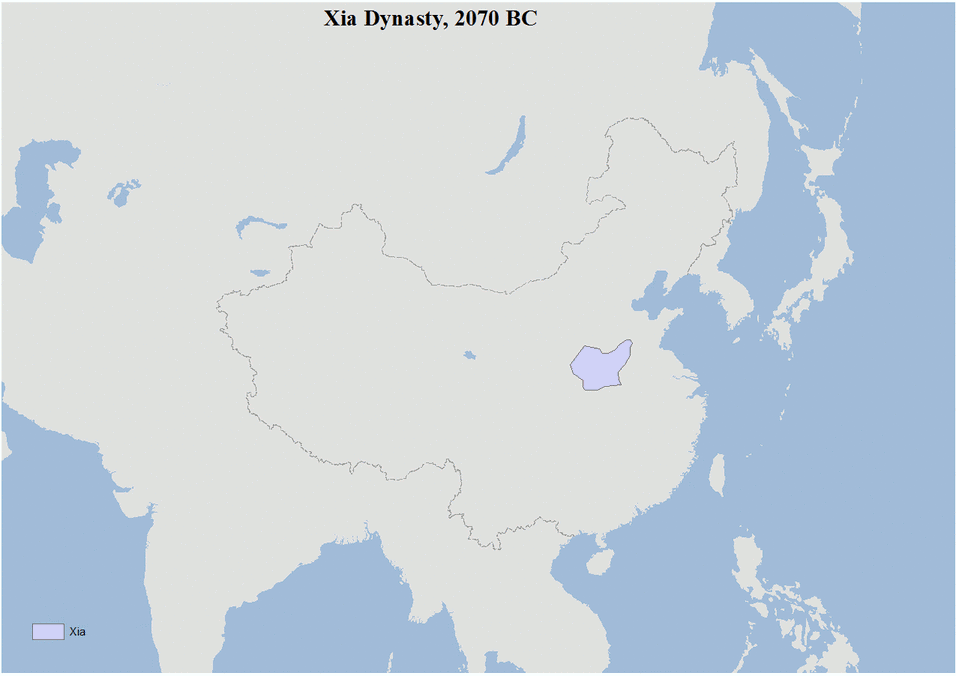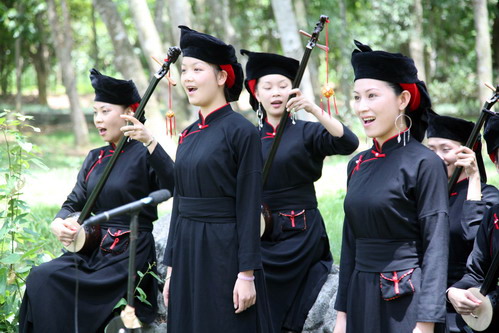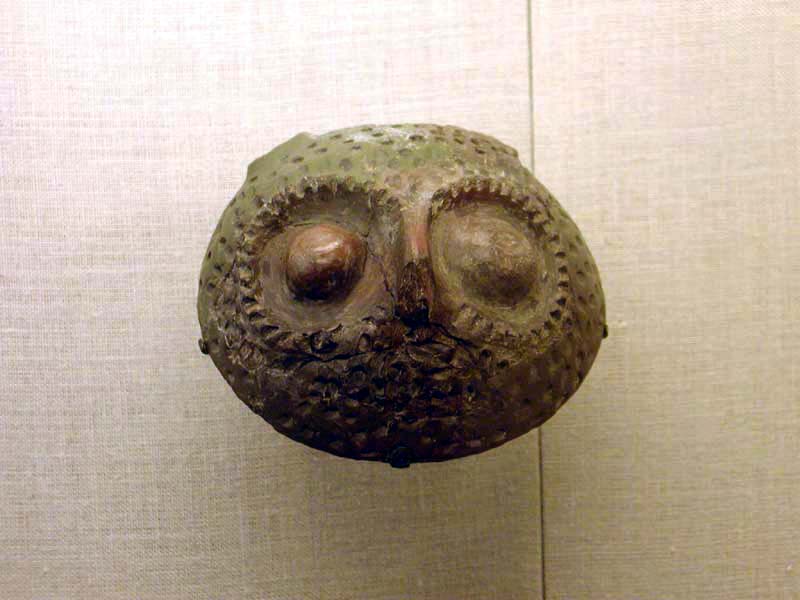|
Yuan Shuji
Yuan Shuji (袁恕己) (died 706), formally Prince Zhenlie of Nanyang (南陽貞烈王), was an official of the Chinese dynasty Tang Dynasty and Wu Zetian's Zhou Dynasty, serving as chancellor during the reign of Emperor Zhongzong. He was a key figure in the coup that overthrew Wu Zetian and restored Emperor Zhongzong in 705, but was later exiled due to false accusations instigated by Wu Zetian's nephew Wu Sansi and killed in exile in a cruel manner. Background It is not known when Yuan Shuji was born. His family was from Cang Prefecture (滄州, roughly modern Cangzhou, Hebei) and traced its ancestry to the late Han Dynasty warlord Yuan Shao. Both Yuan Shuji's grandfather Yuan Lingxi (袁令喜) and father Yuan Yihong (袁異弘) served as prefectural officials. During Wu Zetian's reign Sometime during Wu Zetian's ''Chang'an'' era (701-704), Yuan Shuji served as assistant chief judge of the supreme court (司刑少卿, ''Sixing Shaoqing'') and military advisor to Wu Zeti ... [...More Info...] [...Related Items...] OR: [Wikipedia] [Google] [Baidu] |
History Of China
The earliest known written records of the history of China date from as early as 1250 BC, from the Shang dynasty (c. 1600–1046 BC), during the reign of king Wu Ding. Ancient historical texts such as the ''Book of Documents'' (early chapters, 11th century BC), the ''Bamboo Annals'' (c. 296 BC) and the ''Records of the Grand Historian'' (c. 91 BC) describe a Xia dynasty before the Shang, but no writing is known from the period, and Oracle Bone script, Shang writings do not indicate the existence of the Xia. The Shang ruled in the Yellow River valley, which is commonly held to be the cradle of Chinese civilization. However, Neolithic civilizations originated at various cultural centers along both the Yellow River and Yangtze, Yangtze River. These Yellow river civilization, Yellow River and Yangtze civilizations arose millennia before the Shang. With thousands of years of continuous history, China is among the world's oldest civilizations and is regarded as one of the Cradle of ... [...More Info...] [...Related Items...] OR: [Wikipedia] [Google] [Baidu] |
Crown Prince
A crown prince or hereditary prince is the heir apparent to the throne in a royal or imperial monarchy. The female form of the title is crown princess, which may refer either to an heiress apparent or, especially in earlier times, to the wife of the person styled crown prince. ''Crown prince'' as a descriptive term has been used throughout history for the prince who is first-in-line to a throne and is expected to succeed (i.e. the heir apparent), barring any unforeseen future event preventing this. In certain monarchies, a more specific substantive title may be accorded and become associated with the position of ''heir apparent'' (e.g. Prince of Wales in the United Kingdom or Prince of Asturias in the Spain, Kingdom of Spain). In these monarchies, the term crown prince may be used less often than the substantive title (or never). Until the late twentieth century, no modern monarchy adopted a system whereby females would be guaranteed to succeed to the throne (i.e. absolute pr ... [...More Info...] [...Related Items...] OR: [Wikipedia] [Google] [Baidu] |
Guangxi
Guangxi (; ; alternately romanized as Kwanghsi; ; za, Gvangjsih, italics=yes), officially the Guangxi Zhuang Autonomous Region (GZAR), is an autonomous region of the People's Republic of China, located in South China and bordering Vietnam ( Hà Giang, Cao Bằng, Lạng Sơn, and Quảng Ninh Provinces) and the Gulf of Tonkin. Formerly a province, Guangxi became an autonomous region in 1958. Its current capital is Nanning. Guangxi's location, in mountainous terrain in the far south of China, has placed it on the frontier of Chinese civilization throughout much of Chinese history. The current name "Guang" means "expanse" and has been associated with the region since the creation of Guang Prefecture in 226 AD. It was given provincial level status during the Yuan dynasty, but even into the 20th century, it was considered an open, wild territory. The abbreviation of the region is "" (Hanyu pinyin: ; Zhuang: ), which comes from the name of the city of Guilin, the provin ... [...More Info...] [...Related Items...] OR: [Wikipedia] [Google] [Baidu] |
Hechi
Hechi () is a prefecture-level city in the northwest of the Guangxi Zhuang Autonomous Region, People's Republic of China, bordering Guizhou to the north. In June 2002 it gained city status. Geography and climate Hechi is located in northwestern Guangxi on the southern end of the Yunnan-Guizhou Plateau. The total area is , with elevations increasing from southeast to northwest. It is very mountainous with ranges including in the north the Jiuwanda Mountains, in the northwest the Phoenix Mountains, in the east the Fengling Mountains, in the west, the Duyang Mountains, and in the southwest the Green Dragon Mountains. The tallest mountain is "Nameless Peak" with an elevation of . Bordering prefecture-level divisions are Liuzhou to the east, Laibin to the southeast, Nanning to the south, and Baise to the southwest in Guangxi and Qiannan Buyi and Miao Autonomous Prefecture, Guizhou to the north. Hechi has a monsoon-influenced humid subtropical climate ( Köppen ''Cwa'') and is gene ... [...More Info...] [...Related Items...] OR: [Wikipedia] [Google] [Baidu] |
Lingnan
Lingnan (; Vietnamese: Lĩnh Nam) is a geographic area referring to the lands in the south of the Nanling Mountains. The region covers the modern Chinese subdivisions of Guangdong, Guangxi, Hainan, Hong Kong, and Macau, as well as modern northern to central Vietnam. Background The area was inhabited by the Baiyue and was the base of the ancient kingdom of Nanyue. At that time, Lingnan was considered by the ancient Chinese court to be a tropical barbarian land that had lost contact with the Zhongyuan, which was the cultural cradle of Chinese culture. In the second century BCE, the Han conquest of Nanyue led to its absorption into the Han dynasty The Han dynasty (, ; ) was an Dynasties in Chinese history, imperial dynasty of China (202 BC – 9 AD, 25–220 AD), established by Emperor Gaozu of Han, Liu Bang (Emperor Gao) and ruled by the House of Liu. The dynasty was preceded by th ... during its Southward expansion of the Han dynasty, southward expansion, and its ... [...More Info...] [...Related Items...] OR: [Wikipedia] [Google] [Baidu] |
Luoyang
Luoyang is a city located in the confluence area of Luo River (Henan), Luo River and Yellow River in the west of Henan province. Governed as a prefecture-level city, it borders the provincial capital of Zhengzhou to the east, Pingdingshan to the southeast, Nanyang, Henan, Nanyang to the south, Sanmenxia to the west, Jiyuan to the north, and Jiaozuo to the northeast. As of December 31, 2018, Luoyang had a population of 6,888,500 inhabitants with 2,751,400 people living in the built-up (or metro) area made of the city's five out of six urban districts (except the Jili District not continuously urbanized) and Yanshi District, now being conurbated. Situated on the Central Plain (China), central plain of China, Luoyang is among the List of oldest continuously inhabited cities#East Asia, oldest cities in China and one of the History of China#Ancient China, cradles of Chinese civilization. It is the earliest of the Historical capitals of China, Four Great Ancient Capitals of China. Name ... [...More Info...] [...Related Items...] OR: [Wikipedia] [Google] [Baidu] |
Guangdong
Guangdong (, ), alternatively romanized as Canton or Kwangtung, is a coastal province in South China on the north shore of the South China Sea. The capital of the province is Guangzhou. With a population of 126.01 million (as of 2020) across a total area of about , Guangdong is the most populous province of China and the 15th-largest by area as well as the second-most populous country subdivision in the world (after Uttar Pradesh in India). Its economy is larger than that of any other province in the nation and the fifth largest sub-national economy in the world with a GDP (nominal) of 1.95 trillion USD (12.4 trillion CNY) in 2021. The Pearl River Delta Economic Zone, a Chinese megalopolis, is a core for high technology, manufacturing and International trade, foreign trade. Located in this zone are two of the Chinese city tier system, four top Chinese cities and the List of Chinese prefecture-level cities by GDP, top two Chinese prefecture-level cities by GDP; ... [...More Info...] [...Related Items...] OR: [Wikipedia] [Google] [Baidu] |
Maoming
Maoming, alternately romanized as Mowming, is a prefecture-level city located in southwestern Guangdong province, China. Facing the South China Sea to the city's south, Maoming city borders Zhanjiang to the west, Yangjiang to the east, and Yunfu to the northeast, and is from Guangzhou and from Zhanjiang. The Maoming Port is a Grade I port that handled 16.8 million tons of cargo in 2007. Refined oil and aquatic products are the major export products from the city. Major export destinations include Hong Kong, Macao and ASEAN member nations. As of the 2020 census, Maoming had a population of 6,174,050 inhabitants, 2,539,148 of whom live in the built-up (or metro) area, which includes 2 urban districts ('' Maonan and Dianbai'') largely being conurbated. The city's birth rate is 11.04‰, and its GDP (2012) was RMB 195.118 billion (US$31.81billion), up by 10.6% over the previous year. According to government sources, Maoming's GDP ranked 7th among Guangdong's 21 cities, and rank ... [...More Info...] [...Related Items...] OR: [Wikipedia] [Google] [Baidu] |
Hubei
Hubei (; ; alternately Hupeh) is a landlocked province of the People's Republic of China, and is part of the Central China region. The name of the province means "north of the lake", referring to its position north of Dongting Lake. The provincial capital, Wuhan, serves as a major transportation hub and the political, cultural, and economic hub of central China. Hubei's name is officially abbreviated to "" (), an ancient name associated with the eastern part of the province since the State of E of the Western Zhou dynasty of –771 BCE; a popular name for Hubei is "" () (suggested by that of the powerful State of Chu, which existed in the area during the Eastern Zhou dynasty of 770 – 256 BCE). Hubei borders the provinces of Henan to the north, Anhui to the east, Jiangxi to the southeast, Hunan to the south, Chongqing to the west, and Shaanxi to the northwest. The high-profile Three Gorges Dam is located at Yichang, in the west of the province. Hubei is the 7th ... [...More Info...] [...Related Items...] OR: [Wikipedia] [Google] [Baidu] |
Wuhan
Wuhan (, ; ; ) is the capital of Hubei Province in the People's Republic of China. It is the largest city in Hubei and the most populous city in Central China, with a population of over eleven million, the ninth-most populous Chinese city and one of the nine National Central Cities of China. The name "Wuhan" came from the city's historical origin from the conglomeration of Wuchang, Hankou, and Hanyang, which are collectively known as the "Three Towns of Wuhan" (). Wuhan lies in the eastern Jianghan Plain, at the confluence of the Yangtze river and its largest tributary, the Han River, and is known as "Nine Provinces' Thoroughfare" (). Wuhan has historically served as a busy city port for commerce and trading. Other historical events taking place in Wuhan include the Wuchang Uprising of 1911, which led to the end of 2,000 years of dynastic rule. Wuhan was briefly the capital of China in 1927 under the left wing of the Kuomintang (KMT) government. The city later serve ... [...More Info...] [...Related Items...] OR: [Wikipedia] [Google] [Baidu] |
Henan
Henan (; or ; ; alternatively Honan) is a landlocked province of China, in the central part of the country. Henan is often referred to as Zhongyuan or Zhongzhou (), which literally means "central plain" or "midland", although the name is also applied to the entirety of China proper. Henan is a birthplace of Han Chinese civilization, with over 3,200 years of recorded history and remained China's cultural, economic and political center until approximately 1,000 years ago. Henan Province is home to many heritage sites, including the ruins of Shang dynasty capital city Yin and the Shaolin Temple. Four of the Eight Great Ancient Capitals of China, Luoyang, Anyang, Kaifeng and Zhengzhou, are in Henan. The practice of tai chi also began here in Chen Jia Gou Village (Chen style), as did the later Yang and Wu styles. Although the name of the province () means "south of the ellowriver.", approximately a quarter of the province lies north of the Yellow River, also known as th ... [...More Info...] [...Related Items...] OR: [Wikipedia] [Google] [Baidu] |






.jpg)
